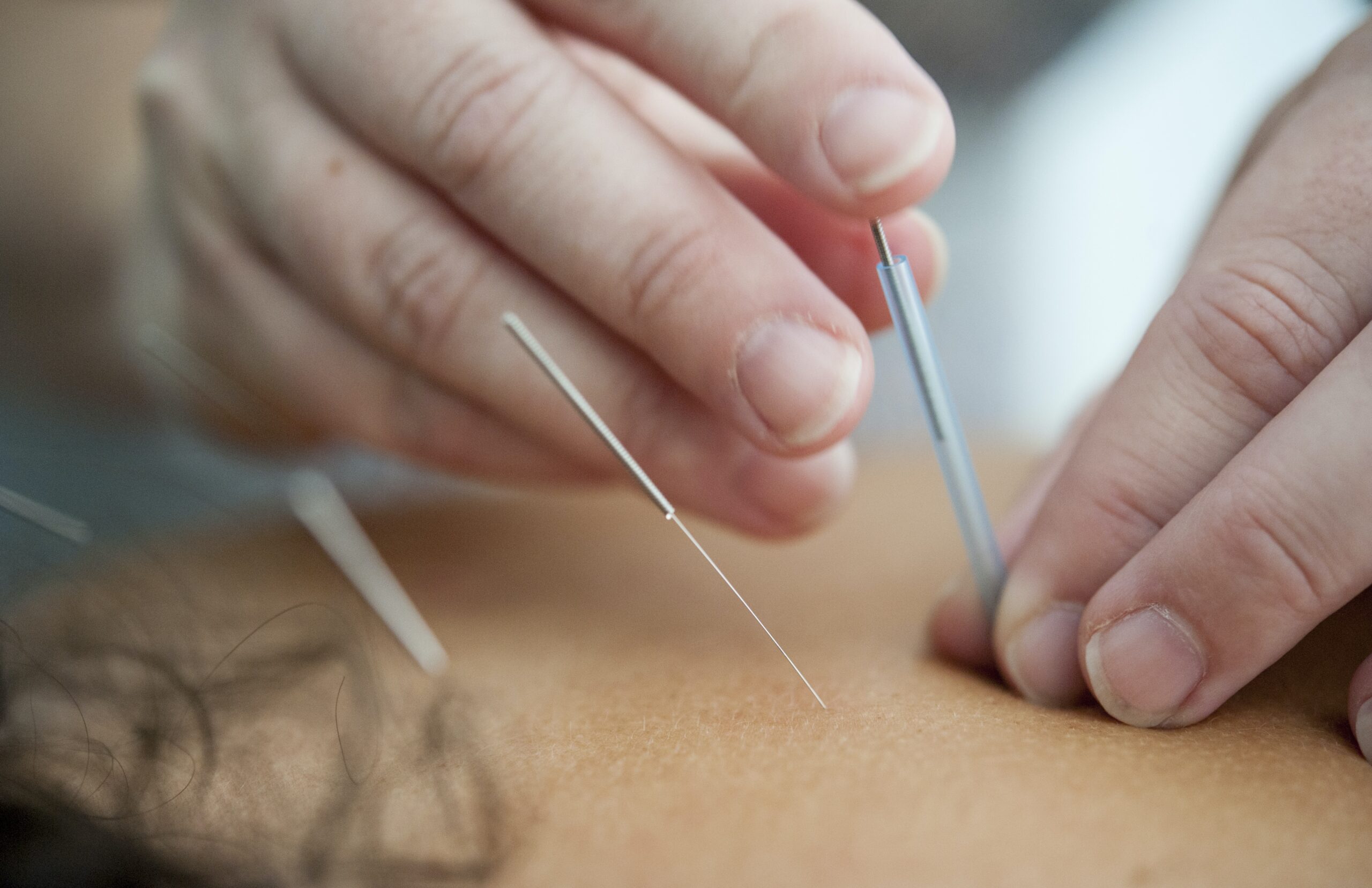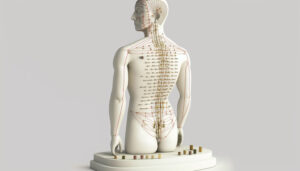
Can Acupuncture Provide Relief For Sacroiliac Joint Discomfort?
Are you tired of dealing with discomfort in your sacroiliac joint? If so, you might be interested in exploring the potential benefits of acupuncture. This ancient healing practice has been used for centuries to treat a wide range of ailments, and many people believe that it can provide relief for sacroiliac joint discomfort as well. In this article, we will explore whether or not acupuncture can truly be an effective solution for your discomfort and what you can expect from this alternative therapy. So, if you’re looking for a potential solution to your sacroiliac joint discomfort, keep reading to find out more about the potential benefits of acupuncture.

This image is property of images.unsplash.com.
Overview of Sacroiliac Joint Discomfort
Sacroiliac joint discomfort refers to pain and discomfort felt in the sacroiliac joint, which is located in the lower back between the sacrum (the triangular bone at the base of the spine) and the ilium (the largest bone in the pelvis). This joint plays a crucial role in providing stability and flexibility to the body during movement. When the sacroiliac joint becomes irritated or inflamed, it can lead to discomfort and limited mobility.
What is the Sacroiliac Joint?
The sacroiliac joint, often abbreviated as SI joint, is a synovial joint that connects the sacrum, located at the bottom of the spine, with the ilium bone of the pelvis. It is a strong but flexible joint that helps absorb shock and transmit forces between the upper body and the lower body during movement. The SI joint is supported by a network of ligaments, which provide stability and limit excessive motion.
What Causes Sacroiliac Joint Discomfort?
Sacroiliac joint discomfort can be caused by various factors. Trauma, such as a fall or an accident, can injure the ligaments in the joint, leading to pain and discomfort. Degenerative conditions, such as arthritis or sacroiliac joint dysfunction, can also contribute to discomfort. Pregnancy and hormonal changes may affect the ligaments, causing sacroiliac joint pain. Additionally, activities that involve repetitive movements or excessive strain on the joint, such as running or lifting heavy objects, can lead to sacroiliac joint discomfort.
Symptoms of Sacroiliac Joint Discomfort
The symptoms of sacroiliac joint discomfort can vary from person to person. Some common symptoms include:
- Pain in the lower back or buttocks, typically on one side
- Pain that radiates down the leg or into the groin
- Stiffness or aching in the lower back
- Difficulty standing up or sitting down
- Pain that worsens with activities such as walking or climbing stairs
- Instability or a feeling that the joint is “locked”
It is important to note that these symptoms can also be attributed to other conditions, so it is crucial to consult with a healthcare professional for an accurate diagnosis.
Understanding Acupuncture
Acupuncture is a traditional Chinese medicine practice that involves the insertion of thin needles into specific points on the body. It is based on the concept of balancing the flow of energy, or qi (pronounced “chee”), within the body’s meridian system. Acupuncture is believed to help restore balance and promote natural healing processes.
How Does Acupuncture Work?
Acupuncture is thought to work by stimulating specific points on the body, known as acupuncture points or acupoints. These acupoints are believed to correspond to different organs, systems, or functions within the body. When the needles are inserted into these points, it is believed to stimulate the flow of energy and promote the body’s self-healing mechanisms.
Benefits of Acupuncture
Acupuncture has been recognized for its potential benefits in managing various conditions, including sacroiliac joint discomfort. Some potential benefits of acupuncture include:
- Pain relief: Acupuncture may help reduce pain and discomfort by stimulating the release of endorphins, which are natural pain-relieving chemicals in the body.
- Improved blood circulation: By stimulating the acupuncture points, blood circulation may be improved, promoting healing and reducing inflammation.
- Stress reduction: Acupuncture has been found to have a calming effect on the nervous system, helping to reduce stress and promote relaxation.
- Enhancing overall well-being: Acupuncture is often used as a holistic approach to healthcare, addressing not only physical symptoms but also emotional and mental well-being.
Research on Acupuncture for Sacroiliac Joint Discomfort
Numerous studies have investigated the effectiveness of acupuncture in relieving sacroiliac joint discomfort. These studies aim to understand the potential benefits and limitations of acupuncture as a complementary therapy.

Studies Investigating the Effectiveness of Acupuncture for Sacroiliac Joint Discomfort
Several small-scale studies have shown promising results in using acupuncture as a treatment for sacroiliac joint discomfort. These studies have used various assessment tools and evaluated the effects of acupuncture on pain levels, functional improvement, and overall quality of life. However, it is important to note that larger-scale studies with rigorous methodologies are needed to further validate these findings.
Results of Acupuncture Studies
Though more research is needed, some studies have indicated positive outcomes for individuals receiving acupuncture for sacroiliac joint discomfort. These results have shown reductions in pain levels, improved joint function, and increased overall satisfaction with the treatment.
Limitations of Acupuncture Research
Despite the promising results, it is essential to acknowledge the limitations of acupuncture research for sacroiliac joint discomfort. Many studies may have small sample sizes, making it challenging to draw broad conclusions. Additionally, the placebo effect and variations in treatment protocols across studies can impact the interpretation of results. Further research is needed to establish the specific mechanisms and long-term effects of acupuncture on sacroiliac joint discomfort.
The Role of Acupuncture in Pain Relief
Acupuncture is commonly used as a complementary therapy for pain relief. It can be incorporated alongside traditional medical treatments to enhance pain management strategies.

Acupuncture as a Complementary Therapy
Acupuncture is often sought by individuals looking for alternative or adjunctive options to conventional pain relief methods. By stimulating the body’s natural healing mechanisms, acupuncture may provide additional pain relief and help reduce the reliance on pain medications or invasive procedures.
Mechanism of Action for Pain Relief
Acupuncture is believed to stimulate the release of neurotransmitters, such as endorphins and serotonin, which can help modulate pain signals in the brain. Additionally, acupuncture may influence the nervous system to reduce pain perception and promote relaxation.
Comparison with Other Pain Relief Options
Acupuncture differs from conventional pain relief options in that it focuses on holistic healing and self-regulation of the body, rather than solely targeting symptoms. While medications may provide temporary relief, acupuncture may offer a more comprehensive approach to addressing pain by promoting overall well-being and balance.
Choosing a Qualified Acupuncturist
When considering acupuncture as a treatment option for sacroiliac joint discomfort, it is crucial to seek a qualified acupuncturist. Here are some factors to consider when choosing a practitioner:

Education and Training Requirements for Acupuncturists
Acupuncturists should have completed formal education programs specific to acupuncture. These programs typically include coursework in anatomy, physiology, traditional Chinese medicine theory, and practical training in acupuncture techniques.
Licensure and Certification
Before seeking acupuncture treatment, it is important to check if the acupuncturist is licensed or certified by a recognized governing body in your region. Licensure requirements vary, but they typically include passing national examinations and meeting specific educational criteria.
Finding a Licensed Acupuncturist
To find a licensed acupuncturist, you can consult with your primary healthcare provider, ask for recommendations from friends or family members, or search online directories of licensed acupuncturists in your area.
What to Expect During an Acupuncture Session
Before your first acupuncture session, it is important to have an initial consultation and assessment with your acupuncturist. This will help them understand your specific concerns and develop an individualized treatment plan.

Initial Consultation and Assessment
During the initial consultation, your acupuncturist will ask about your medical history, any previous treatments you have tried, and the specific symptoms you are experiencing. They may also conduct a physical examination to assess your overall condition, including evaluating your sacroiliac joint.
Needle Insertion and Technique
Once the assessment is complete, your acupuncturist will proceed with the treatment. They will insert thin, sterile needles into specific acupoints on your body. The needle insertion is typically painless, although you may feel a slight tingling, warmth, or a dull ache at the site.
Duration and Frequency of Treatments
The duration and frequency of acupuncture treatments will vary depending on several factors, including the severity of your sacroiliac joint discomfort and your response to the treatment. Initially, your acupuncturist may recommend regular sessions, typically once or twice a week, for a certain period of time. As your symptoms improve, the frequency of treatments may be reduced.
Possible Side Effects and Safety Considerations
Acupuncture is generally considered safe when performed by a qualified practitioner. However, like any medical intervention, there are possible side effects and safety considerations to be aware of.
Common Side Effects of Acupuncture
Some individuals may experience mild side effects after acupuncture, such as slight bruising or soreness at the needle insertion sites. In rare cases, more serious side effects such as infections or organ injury may occur. Therefore, it is essential to choose a licensed acupuncturist who follows proper sterilization and safety protocols.
Safety Precautions to Consider
Certain individuals may need to take additional safety precautions before receiving acupuncture. These include individuals with bleeding disorders, those taking blood-thinning medications, or individuals with compromised immune systems. It is crucial to discuss any existing medical conditions or medications with your acupuncturist before starting treatment.
Special Considerations for Certain Individuals
Pregnant individuals should inform their acupuncturist, as specific acupoints may need to be avoided during pregnancy. Additionally, individuals with pacemakers or other implanted medical devices should consult with their healthcare provider before attempting acupuncture.
Case Studies and Patient Experiences

Real-life examples of individuals who have tried acupuncture for sacroiliac joint discomfort can provide valuable insights into the potential benefits and variations in outcomes.
Personal Testimonials and Anecdotes
Many individuals have reported positive experiences with acupuncture for sacroiliac joint discomfort. Some have found significant pain relief and improved functionality, while others have noticed a reduction in overall stress and improved well-being. It is important to remember that personal testimonials may vary, and individual experiences are influenced by various factors.
Discussing Acupuncture with Your Healthcare Provider
Before initiating acupuncture or any new treatment, it is essential to consult with your healthcare professional, especially if you are also undergoing other treatments or taking medications.
Consulting with a Healthcare Professional Before Trying Acupuncture
Your healthcare provider can provide guidance and discuss the potential benefits and risks of acupuncture in relation to your specific condition. They can also help evaluate if acupuncture is appropriate as a complementary therapy for your sacroiliac joint discomfort.
Potential Interactions with Other Treatments or Medications
If you are already undergoing other treatments or taking medications to manage your sacroiliac joint discomfort, it is important to discuss potential interactions or contraindications with your healthcare provider. They can help ensure that acupuncture aligns with your overall treatment plan.
Possibility of Integrated Treatment Plans
In some cases, a healthcare provider may suggest an integrated treatment plan that combines acupuncture with other therapeutic modalities. This approach can maximize the benefits of each treatment and optimize your overall outcomes.
Conclusion
Acupuncture holds promise as a potential adjunctive therapy for sacroiliac joint discomfort. While further research is needed to establish its efficacy, many individuals have reported positive outcomes and improved quality of life with acupuncture. If you are considering acupuncture for sacroiliac joint discomfort, it is important to consult with a qualified acupuncturist and discuss its potential benefits and considerations with your healthcare provider. By exploring acupuncture as a complementary option, you may find relief and enhanced well-being in your journey towards managing sacroiliac joint discomfort.









